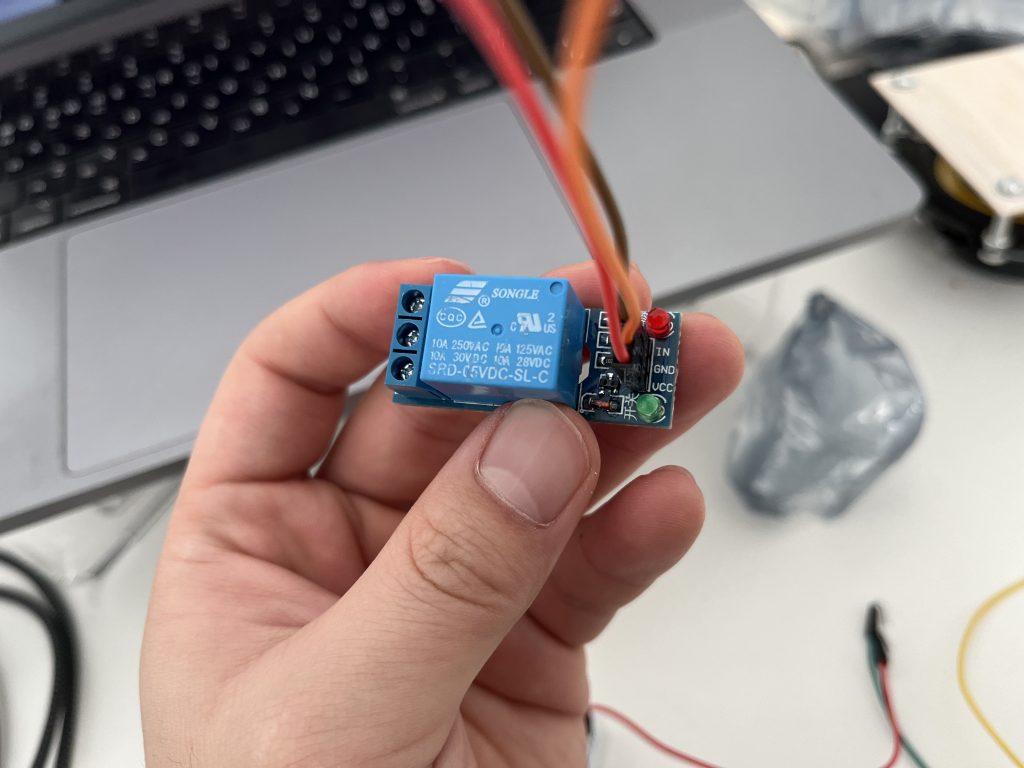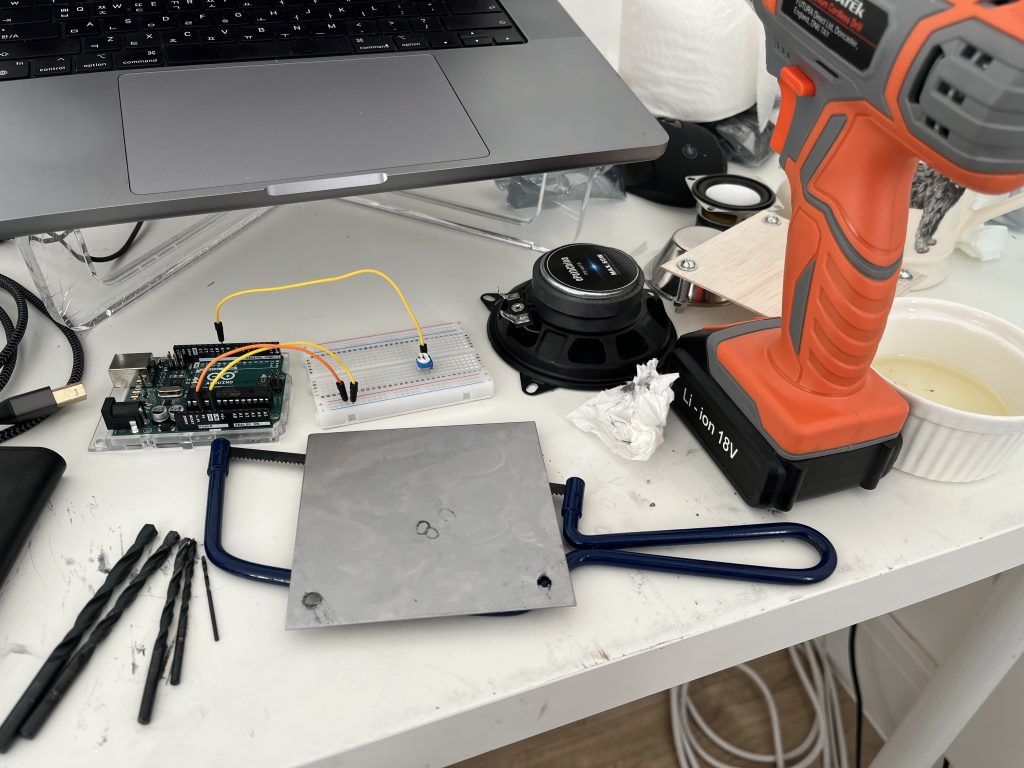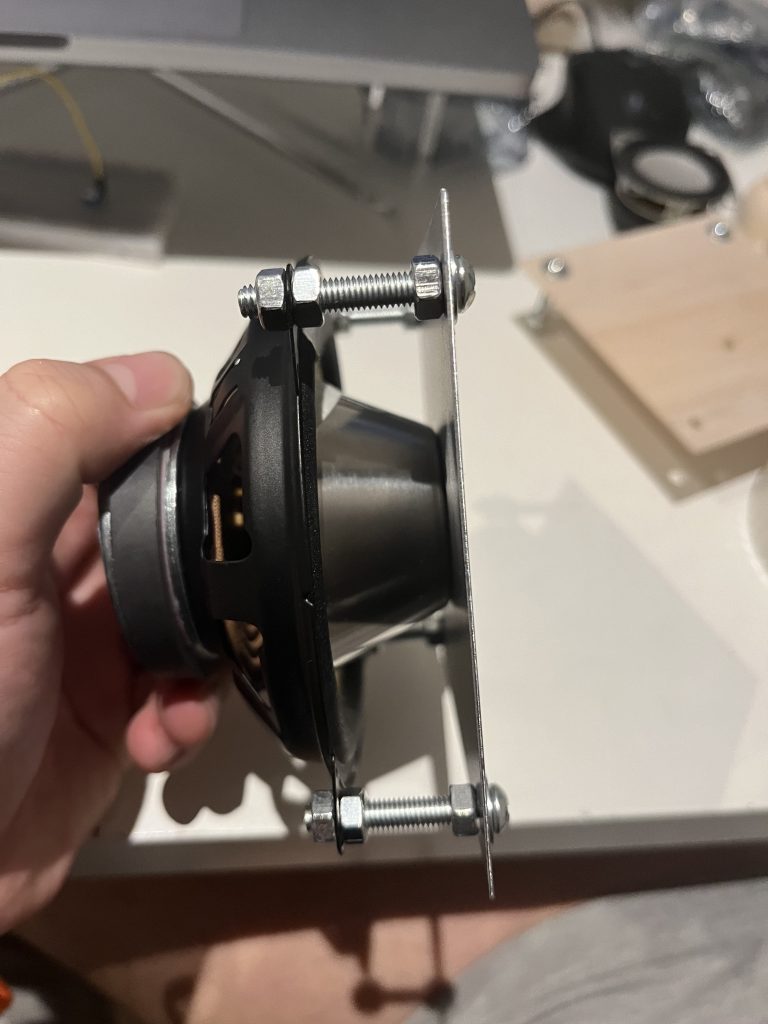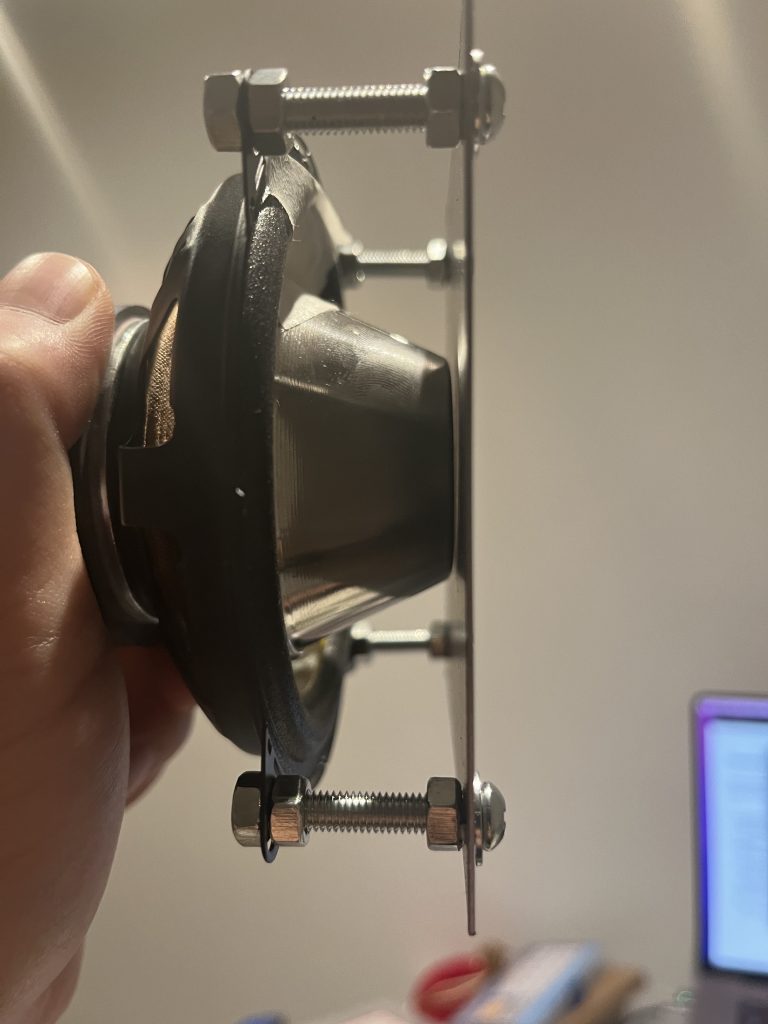I got a mini screwdriver to connect the audio amplifier to the speakers, an electric drill to drill through the steel plate, and a relay module to send external power to the speakers. I’m going to experiment with these three things.
I couldn’t use the LM386 before because I didn’t have the right screwdriver to connect the jumper wires to the part called the terminal block, which requires a very small screw to turn, so I bought a mini screwdriver and connected the LM386 to the speaker. The LM386 is divided into two parts: the part that connects to the breadboard or Arduino and the part that connects to the speaker: The part that connects to the breadboard consists of VDD to get power to run the lm386, ‘Audio Input + -’ to receive audio information or electrical signals, and ground, and the part that connects to the speaker consists of OUT+ and ground.

Anyway, I connected it to my speakers, and the effect was pretty good – it definitely made the sound very loud, and this worked with both small and larger speakers. However, the effect I wanted was to make the plates of the speakers bounce, not to make the sound louder, so I don’t think it is suitable for that. I should think of this audio amplifier as just one option to use when creating sequences for later playback.
The second thing I experimented with was the relay module. I bought this as a backup in case the audio amplifier didn’t produce the results I was expecting, like the experiment above. The relay module works like a switch, and has two parts similar to an audio amplifier; one that connects to the breadboard or Arduino, and one that connects to the object to be powered, such as a speaker or motor, and one that connects to an external power source, such as a battery. The part that is connected to the Arduino consists of VDD, which receives power, IN, which receives electrical signals, and ground, and NO (Normally Opened) and NC (Normally Closed) for the part that is connected to the object to be powered (speaker), and COM (Common) for the part that is connected to the object that supplies power (battery). NO and NC have opposite characteristics: NO discharges power from COM when an electrical signal is received and is normally closed, while NC discharges power when no electrical signal is received and disconnects power when an electrical signal is received. I used NO because I only want to send power when an electrical signal is sent.

At first, I didn’t understand the purpose of COM, so the relay module didn’t work properly. I thought that the VDD part connected to the 5v power line of the Arduino could supply power, so I experimented by connecting the speaker to NO without connecting anything to COM. However, the relay module clicked, but the speaker didn’t make any sound.
Later, I realised that this was a problem due to the lack of external power supply, so I connected a 1.5v battery (AA battery) and the experiment was successful: it was still a little weak, but it provided enough power for the object connected to the speaker to hit the steel plate. One question may arise at this point: why use a 1.5v battery connected to the relay module when the power sent by the Arduino is already 5v? However, I’m going to use a 9V battery (the speaker I decided to use has a maximum power of 24V, so I could have used a stronger current, but I chose to use a 9V battery for reliability reasons and because batteries above 9V are hard to get or connect). I have ordered connectors to make it easier to connect the battery and relay module. I will experiment again tomorrow with a 9V battery.
The last thing I experimented with was a sheet of steel. As I mentioned, I bought a power drill and drilled the holes myself due to a failed 3D Workshop booking. It was surprisingly difficult to drill a hole in a sheet of steel (maybe because my drill is underpowered, or maybe because the bit I used was not sharpened). Nevertheless, I managed to drill a hole in a 0.8mm sheet of steel and tested it to see if it would make a clear sound when an object hit it. Fortunately, it sounded good, and I think it could be louder with more power.



This experiment has determined the speakers we will use, and it is a great achievement that we decided to use relay modules and batteries instead of audio amplifiers, and that the sound is as good as we expected from a steel plate. I’m going to order 10 speakers to start with, and I’m going to make sure I have the right number of iron plates. Tomorrow, I’ll experiment with 9v batteries when they arrive, and I’ll also drill holes in some 2mm and 3mm steel plates I bought to see how they sound different from 0.8mm.